Classic Block
The classic block allows you to add content to your site using the traditional (but now outdated) editing interface.
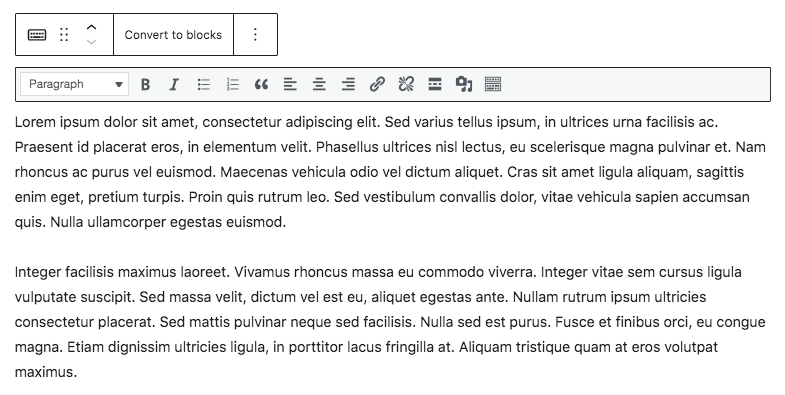
It is almost always better to divide your content into individual blocks, but in some situations it might make sense to use a classic block instead.
Classic blocks allow you to:
Enter multiple paragraphs of text into a single block;
-
Use the Paste as text button to strip all formatting from pre-formatted text – such as content copied from a Word document or another website;
- Use the Special character button to quickly insert symbols – such as copyright (©), registered (®), and trademark (™).
To convert a classic block to individual blocks, simply click Convert to blocks in the block toolbar.
Code Block
The code block allows you to insert example code that will be displayed as plain text.

Please note that the code you add to this block is for presentation only and will not actually be rendered on your site. (If you want to insert functional code into a block, you can use the custom HTML block for that instead.)
Heading Block
The heading block allows you to insert a heading. By default, the heading will be H2 but you can change this by clicking the H2 icon in the toolbar and selecting a different heading level.

In the settings sidebar, you can find options to:
- Change the font size;
- Change the text colour and background colour;
- Add an HTML anchor (this allows you to link a word or phrase to this specific section of the content).
List Block
The list block allows you to create ordered (numbered) and unordered (non-numbered, typically bullet point) lists. You can switch between these two list types by clicking their icons in the block toolbar.


In the settings sidebar, you can find options to:
- Specify the start value of a numbered list;
- Display the numbers in reverse order.
Paragraph Block
The paragraph block allows you to create a single paragraph of text. Each paragraph forms a separate block, so new blocks are automatically created when you hit the Enter key as you type.

In the settings sidebar, you can find options to:
- Change the font size;
- Enable drop caps (enlarges the first character of text in the paragraph);
- Change the background and text colours.
Preformatted Block
The preformatted block allows you to create text that respects your spacing and tabs. It is usually displayed in a monospaced (ie: fixed-width) font. Although this block looks similar to a code block, code blocks should only be used to display fragments of code and preformatted blocks can be used for any text.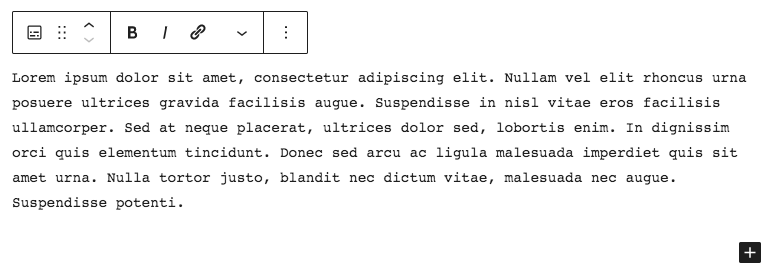

Pullquote Block
The pullquote block allows you to highlight short excerpts from your text content that you wish to draw attention to.
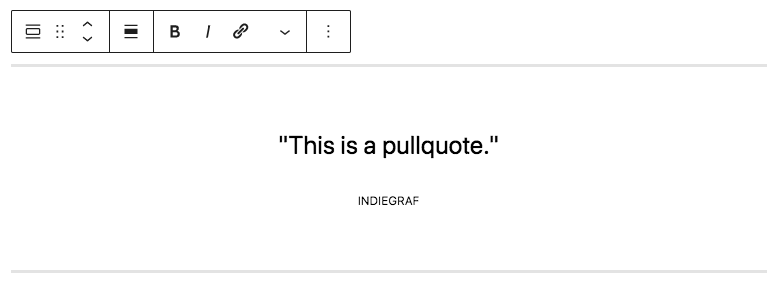
In the settings sidebar, you can find options to:
- Change the style of the pullquote (Default _ or **_Solid colour**);
- Change the main colour and text colour.
Quote Block
The quote block allows you to create a quote along with a citation.
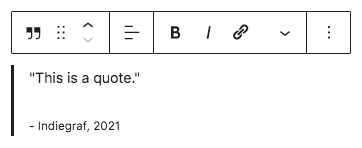
In the settings sidebar, you can find options to:
- Change the style of the quote (Default _ or **_Solid colour**);
- Select a default style for any additional quote blocks you add to the post/page.
Table Block
The table block allows you to create an HTML table. When you add a table block, you will be prompted to specify the number of rows and columns you want to have in your table. To add or remove columns afterwards, you can use the options available under the Edit Table icon in the block toolbar.
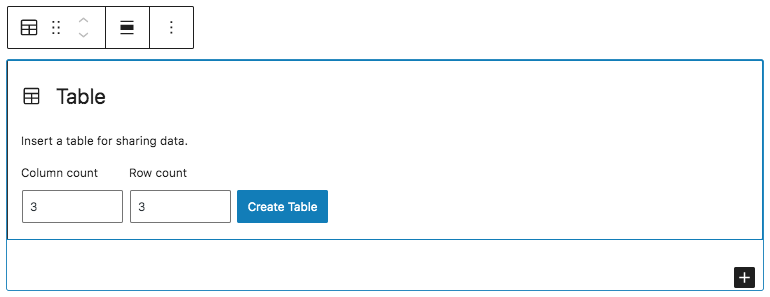
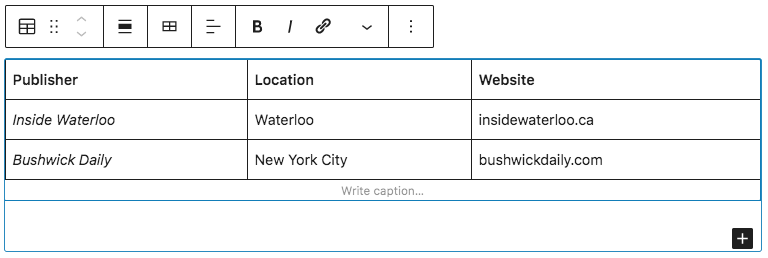
In the settings sidebar, you can find options to:
- Change the style of the table (Default or Stripes) – the Stripes option makes the table easier to read by adding shading to every alternate row (especially recommended for tables that contain a large amount of data);
- Select a default style for any additional table blocks you add to the post/page.
Verse Block
The verse block allows you to add text that uses special spacing formats, such as poetry or song lyrics. Unlike a paragraph block, the verse block will maintain your spacing and tabs.
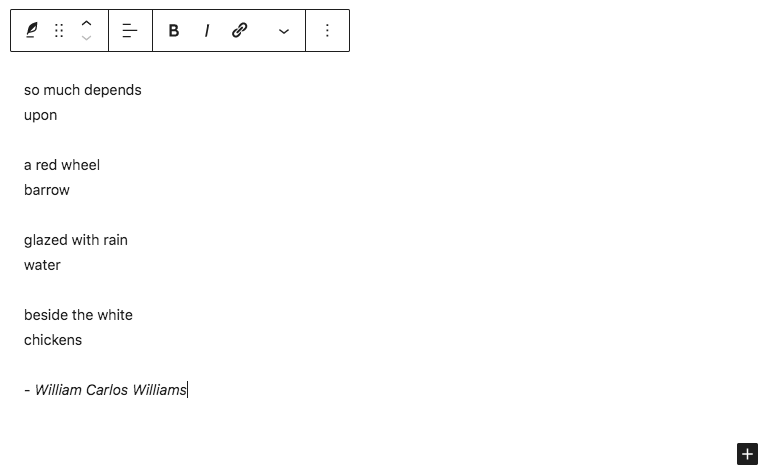
You can change the font size of the text in the settings sidebar.
